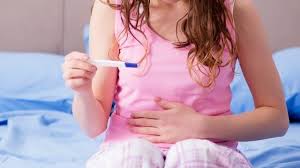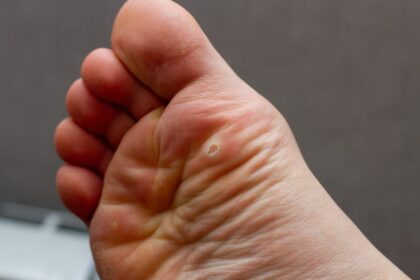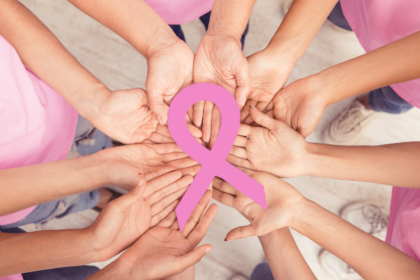Introduction
Fertility is the ability to conceive a child, and while many women achieve pregnancy without difficulty, others may face challenges. Fertility issues in women are more common than often believed, affecting millions worldwide. These problems can arise from various physical, hormonal, and lifestyle-related factors. Early diagnosis and treatment significantly improve the chances of conception.
This guide offers a deep understanding of female infertility, from its causes to modern treatment options.
Understanding Female Fertility
1. How Fertility Works
Fertility depends on a healthy reproductive system:
- Ovaries produce eggs
- Fallopian tubes transport the egg to the uterus
- Uterus must be ready for implantation
- Hormones must regulate ovulation and menstrual cycles properly
If any part of this system is disrupted, conception can be affected.
Common Causes of Fertility Issues in Women
1. Ovulation Disorders
Account for nearly 40% of infertility cases in women.
Examples:
- Polycystic Ovary Syndrome (PCOS)
- Hypothalamic dysfunction
- Premature ovarian failure
2. Fallopian Tube Damage or Blockage
Caused by:
- Pelvic Inflammatory Disease (PID)
- Previous surgeries
- Endometriosis
3. Uterine or Cervical Issues
Problems such as:
- Fibroids
- Uterine polyps
- Abnormal cervical mucus
4. Endometriosis
A condition where tissue similar to the uterine lining grows outside the uterus, affecting ovulation and fallopian function.
5. Age-Related Decline
Fertility naturally decreases after age 35 due to:
- Lower egg quantity
- Declining egg quality
6. Lifestyle Factors
- Smoking, alcohol, poor diet
- Being overweight or underweight
- High stress levels
Signs and Symptoms of Fertility Problems
- Irregular or absent menstrual cycles
- Painful periods or intercourse
- Hormonal symptoms (acne, excess hair growth, weight gain)
- No pregnancy after 12 months of unprotected intercourse (or 6 months if over 35)
How Fertility Is Diagnosed
1. Medical History and Physical Exam
The doctor asks about your:
- Menstrual cycle
- Sexual history
- Lifestyle factors
- Medical and surgical history
2. Ovulation Testing
Includes:
- Blood tests to check hormone levels (FSH, LH, progesterone)
- Tracking basal body temperature
- Ovulation predictor kits
3. Imaging Tests
- Ultrasound: Evaluates ovaries, uterus, and follicles
- Hysterosalpingography (HSG): Checks for blockages in fallopian tubes
- Sonohysterography: Identifies uterine abnormalities
4. Laparoscopy (if needed)
A minimally invasive surgery used to detect issues like endometriosis, scar tissue, or blockages.
Treatment Options for Female Fertility Issues
1. Lifestyle Modifications
- Maintain a healthy weight
- Quit smoking and alcohol
- Manage stress with yoga, meditation, and therapy
- Eat a fertility-boosting diet (rich in antioxidants, iron, folate)
2. Medications to Induce Ovulation
- Clomiphene Citrate (Clomid)
- Letrozole (Femara)
- Gonadotropin injections
These stimulate the ovaries to release eggs.
3. Surgery
Used to treat:
- Blocked fallopian tubes
- Fibroids or polyps
- Endometriosis lesions
4. Assisted Reproductive Technology (ART)
| Method | How It Works |
|---|---|
| Intrauterine Insemination (IUI) | Sperm is directly inserted into the uterus during ovulation |
| In Vitro Fertilization (IVF) | Eggs are fertilized in a lab and implanted in the uterus |
| ICSI (Intracytoplasmic Sperm Injection) | A single sperm is injected into the egg (used with IVF) |
| Egg Freezing or Donor Eggs | Option for women with low egg quality or premature ovarian failure |
Emotional and Psychological Support
1. Coping With Infertility Stress
Fertility challenges can take a toll on mental health. It’s important to:
- Talk to a therapist or counselor
- Join infertility support groups
- Maintain open communication with your partner
2. Seeking Support Early
Delaying help can increase emotional burden. If you’ve been trying for a year without success (or six months if over 35), consult a fertility specialist.
Prevention and Fertility Preservation Tips
- Avoid STIs by practicing safe sex
- Treat medical conditions like thyroid or diabetes early
- Limit exposure to toxins (pesticides, plastics, radiation)
- Consider egg freezing if you plan to delay pregnancy
Conclusion
Fertility issues in women can be challenging, but with proper diagnosis and timely treatment, many go on to have successful pregnancies. Understanding the signs, maintaining a healthy lifestyle, and exploring medical options when needed are crucial steps in the journey. Remember, you are not alone—thousands of women face similar struggles and find hope through modern medicine and support systems.
FAQs
1. What is the most common cause of infertility in women?
Ovulation disorders, particularly PCOS, are the leading cause of female infertility.
2. How long should I try to conceive before seeing a doctor?
If you’re under 35, try for 12 months. If you’re 35 or older, consult a doctor after 6 months of trying.
3. Can stress cause infertility?
Yes, chronic stress can disrupt hormonal balance and ovulation, reducing fertility.
4. Is infertility always a woman’s issue?
No. Male factors contribute to 30–40% of infertility cases, so both partners should be evaluated.
5. Can I still get pregnant with PCOS?
Yes. With proper treatment and lifestyle changes, many women with PCOS conceive naturally or with assistance.
6. Is IVF the only treatment option for infertility?
No. Many issues can be treated with medication, surgery, or less invasive methods like IUI.
7. Does age really affect fertility?
Yes. Fertility begins to decline after age 30 and significantly after 35 due to fewer and lower-quality eggs.
8. What are natural ways to boost fertility?
Eating a balanced diet, reducing stress, avoiding alcohol/smoking, and maintaining a healthy weight can help boost fertility naturally.









